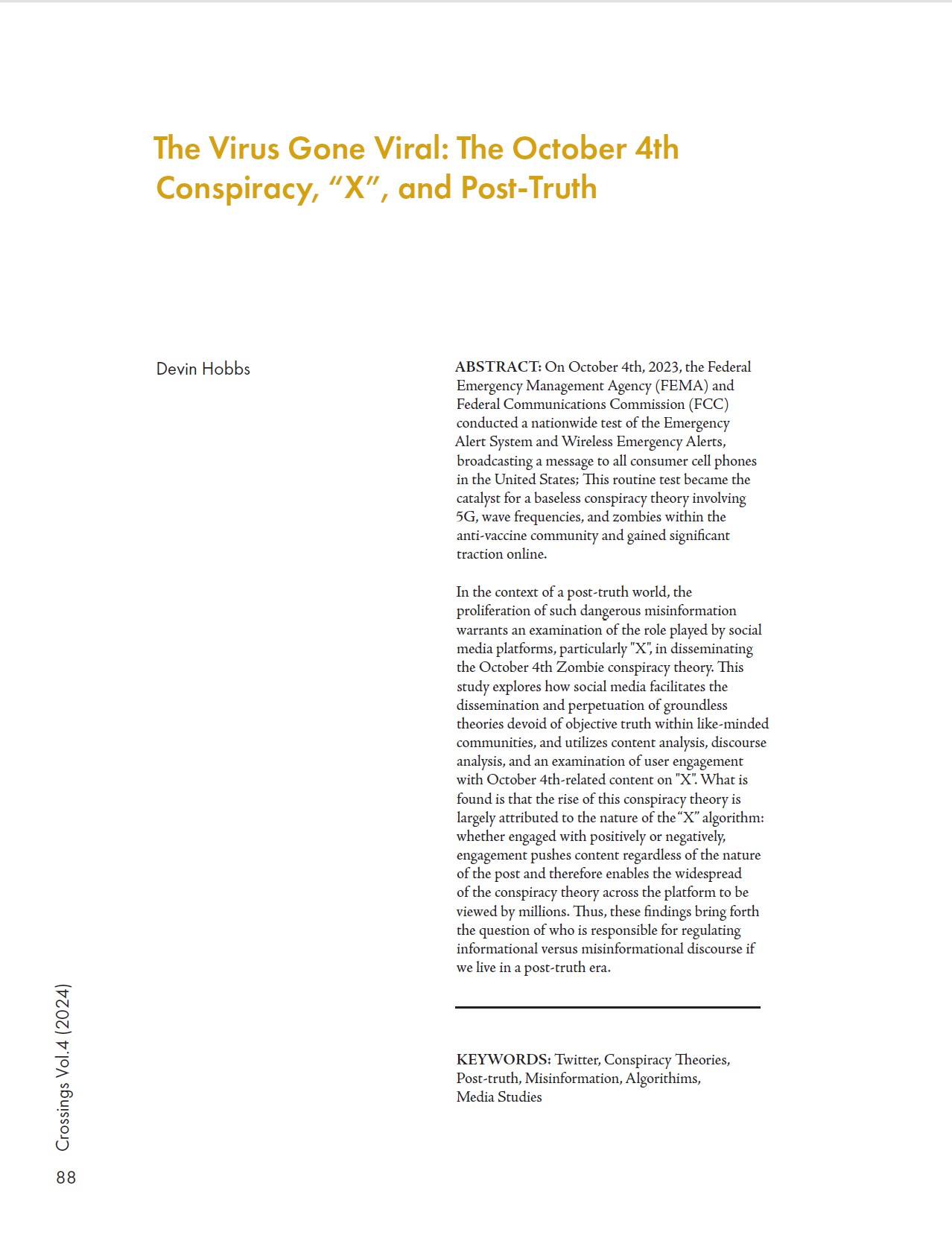The Virus Gone Viral: The October 4th Conspiracy, “X”, and Post-Truth
DOI:
https://doi.org/10.29173/crossings243Keywords:
Twitter, conspiracy theories, Post-truth, misinformation, algorithmsAbstract
On October 4th, 2023, the Federal Emergency Management Agency (FEMA) and Federal Communications Commission (FCC) conducted a nationwide test of the Emergency Alert System and Wireless Emergency Alerts, broadcasting a message to all consumer cell phones in the United States; This routine test became the catalyst for a baseless conspiracy theory involving 5G, wave frequencies, and zombies within the anti-vaccine community and gained significant traction online.
In the context of a post-truth world, the proliferation of such dangerous misinformation warrants an examination of the role played by social media platforms, particularly "X" (formerly "Twitter"), in disseminating the October 4th Zombie conspiracy theory. This study explores how social media facilitates the dissemination and perpetuation of groundless theories devoid of objective truth within like-minded communities, and utilizes content analysis, discourse analysis, and an examination of user engagement with October 4th-related content on "X". What is found is that the rise of this conspiracy theory is largely attributed to the nature of the “X” algorithm: whether engaged with positively or negatively, engagement pushes content regardless of the nature of the post and therefore enables the widespread of the conspiracy theory across the platform to be viewed by millions. Thus, these findings bring forth the question of who is responsible for regulating informational versus misinformational discourse if we live in a post-truth era.

Downloads
Published
Issue
Section
License
Copyright (c) 2024 Devin Hobbs

This work is licensed under a Creative Commons Attribution 4.0 International License.

